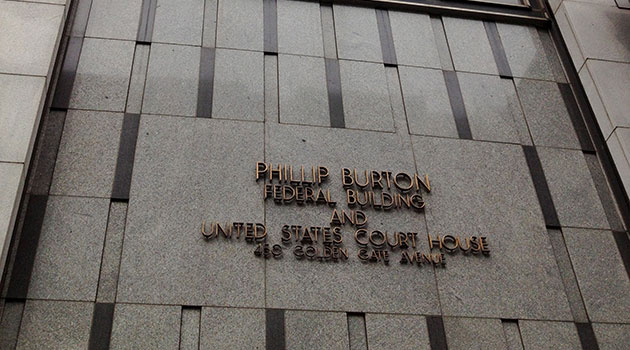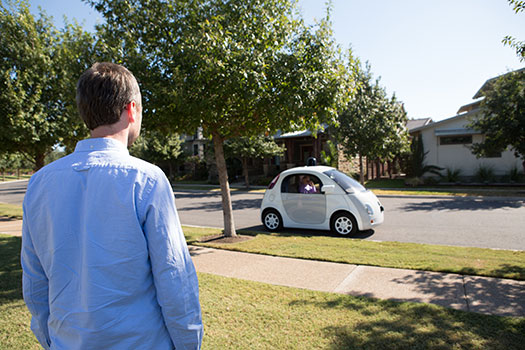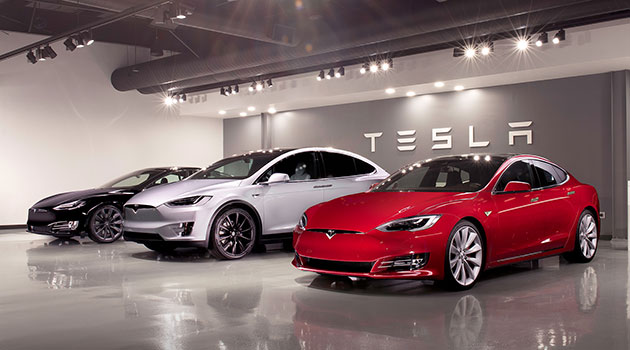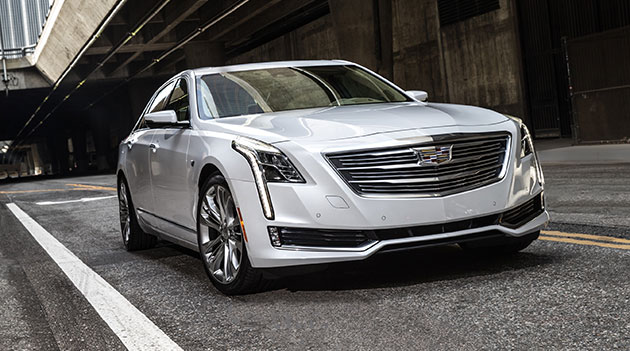Among the kaleidoscopic shifts of 2017, some of the most far-reaching stemmed from the marriage of automotive and tech—and the changes came fast, even for two industries defined by their speed.
Foundations of new-age empires were fortified as the old guard showed signs of stress, and corporate rivals got the chance to sharpen their knives. Meanwhile, Congress drafted new rules to accelerate the advancement of self-driving cars, in hopes the technology can put a stop to the rising roadway death toll—even if it comes at the price of consumer privacy.
Below, some of the stories that helped fuel the auto industry’s wild ride of a year.
The Harder They Fall

The rapid consolidation of the automotive and technological worlds has amassed and redistributed vast amounts of power among a clutch of high-profile corporations, laying the groundwork for the construction of an entirely new economy at the behest of the new-age titans of industry.
But such a primal landscape can just as easily foster the fall of an empire, and perhaps no other competitor has demonstrated that better than Uber.
The ridehail giant started the year off poorly and only saw its circumstances worsen—and its $70 billion valuation start to slip away.
At times, it seemed the company was besieged on all fronts as it weathered internal strife from employees speaking up about sexual harassment and outside pressure from contractors who aired a litany of grievances, not least of which that they had been shorted millions of dollars' worth of pay—all while being forced to find a new CEO to replace the bombastic Travis Kalanick, whose wheelings and dealings helped lead the company into legal hot water with Waymo.
And Uber certainly didn’t do itself too many favors, often lashing out at any regulation-minded authority, with no fight too small—including a disastrously petty bout with the California DMV over a $150 testing permit.
The company is currently awaiting a multi-billion-dollar lawsuit to kick off in San Francisco, with much of its fortune—and what’s left of its reputation—on the line.
Still, Americans like nothing more than a comeback, and 2018 could be a resilient Uber’s year.
Clash of the Titans

Uber’s fate rests largely on the outcome of the massive trial pitting the rideshare giant against corporate rival Waymo, the self-driving arm of Google. Waymo is suing Uber in the Federal District Court of the Northern District of California in San Francisco.
The legal battle has been tumultuous from the start, originating over allegations of trade secret theft and collusion. Waymo lawyers said Uber officials knowingly benefited from stolen information they gained through the acquisition of Otto, a start-up set up by ex-Google employee Anthony Levandowski. Levandowski swindled more than 14,000 classified files from the search engine giant’s self-driving start-up before departing his post, Waymo’s legal team said.
Nasty behavior from lawyers on both sides has already prompted a verbal upbraiding from Federal District Court Judge William Alsup, and the trial’s start date has been delayed twice over issues of Uber’s lack of forthrightness with evidence.
The suit is now scheduled to start Feb. 5, following the last-minute disclosure of a document alleging Uber trains its employees specifically to mine for trade secrets—and cover their tracks.
In the meantime, Uber won’t get a break from the case, as the federal government continues its investigation into the issue—the result of a recommendation by Alsup that the suit be followed up by the Department of Justice.
Bad Moon on the Rise

Things in the public sector have also been rocky, with the announcement that 2016 marked yet another record-setting year for roadway deaths in the country.
Fatalities reached 37,461, topping 2015’s own precedent-establishing year by an increase of more than 5%. For its part, 2015 also marked the largest single-year jump in the number of roadway deaths since 1965—and had the most total roadway deaths since 2008.
The issue has permeated other areas of society, playing a role in the simultaneously growing number of workplace fatalities, which ballooned by 15% between 2011 and 2015. Roadside-related deaths on the job topped 1,200 in 2015, comprising more than a quarter of all fatal workplace incidents that year.
Compounding the problem is the meteoric rise of distracted driving, which is now predicted to affect upwards of 660,000 motorists a day.
With trend lines showing no signs of slowing, the growing crisis has prompted federal action, with the government putting all its stock in a solution aimed at escalating the roll-out of self-driving cars.
Legalize It

Indeed, it seems the need to fast-track autonomous autos was a rare initiative that found Congress in agreement this year.
Both houses of the legislative branch successfully drafted bills outlining federal regulations for the technology moving forward, with an obvious emphasis on growing the industry as quickly as possible.
Written for the House version—and mimicked in the Senate’s—one provision allows carmakers to flout federal safety standards for hundreds of thousands of vehicles sold on the open market each year. Another clears the way for companies to swiftly move past more legal hurdles, barring states from creating their own rules on the burgeoning tech. (Still, the new bills got a pass from cybersecurity experts.)
And Congress wasn’t the only government agency scrubbing away industry protocol for autonomous carmakers this year. The U.S. Department of Transportation released a new set of proposals that all but eliminate consumer privacy measures placed on the technology and serve to streamline other federal guidelines shaping the world of self-driving vehicles.
Let’s Make a Deal

Michigan may be the birthplace of the auto dealership, but may soon also be its final resting place.
A landmark case on the nature of the industry is currently being argued in Detroit, with California-based electric automaker Tesla fighting the state’s top administrators over the chance to sell its vehicles directly to customers.
Such linear business models are illegal in most of the country, and Tesla has taken it upon itself to undo the legislation, ultimately disseminating American auto dealers’ stronghold on capitalistic power.
With its well-established place at the head of the automotive world, Michigan is a top target for Tesla’s legal fight. And the California company will likely keep its combative resolution next year, especially after a recent win in Missouri buoyed its cause.
The tide seems to be favorably turning in Tesla’s direction—albeit more slowly than the automaker would like. A confluence of factors have helped to speed the demise of the dealership, and signal the start of the new passenger economy.
The peculiar turns of the year all lead to the same question: How much more pressure can the old automotive world take?
The cracks are forming and a new seed has been planted, its coming growth dooming what’s left of the fractured façade. When it finally crumbles, and all the dust settles, at least we’ll be able to say we were here.
